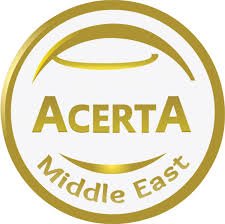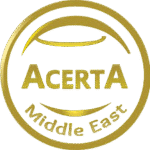
The Control of Major Accident Hazards (COMAH) regulations are a cornerstone of safety management in industries handling dangerous substances. These regulations, primarily enforced in the UK, aim to prevent major accidents and limit their consequences to people and the environment. A critical component of COMAH compliance is the As Low As Reasonably Practicable (ALARP) demonstration, which ensures risks are reduced to acceptable levels. This article delves into the intricacies of COMAH, the importance of ALARP, and practical steps for implementation, with insights into how organizations like Cormat Group navigate these requirements to uphold safety and compliance.
The COMAH regulations, introduced in 1999 and updated in 2015, apply to sites storing or handling large quantities of hazardous substances, such as chemicals, explosives, or flammable liquids. Administered by the Health and Safety Executive (HSE) and the Environment Agency in the UK, COMAH categorizes sites into Lower Tier and Upper Tier based on the volume and type of substances held. Lower Tier sites have lighter requirements, while Upper Tier sites must produce detailed safety reports.
The primary goal of COMAH is to prevent major accidents, such as fires, explosions, or toxic releases, and mitigate their impact. This involves identifying hazards, assessing risks, and implementing control measures. For example, a chemical plant storing large quantities of ammonia must comply with COMAH to ensure safe operations and protect nearby communities.
COMAH compliance requires operators to:
Organizations like Cormat Group, known for their expertise in high-risk industries, integrate COMAH principles into their operations, ensuring safety is woven into every process. Compliance is not just about meeting legal requirements; it’s about fostering a culture of vigilance and responsibility.
ALARP, or As Low As Reasonably Practicable, is a fundamental concept in COMAH and broader safety management. It requires operators to reduce risks to a level where the cost and effort of further risk reduction outweigh the benefits. In other words, risks must be minimized to the point where they are tolerable, balancing safety with practicality.
ALARP is not about eliminating all risks—since absolute safety is unattainable—but about making informed decisions to achieve an acceptable level of safety. For instance, installing a state-of-the-art fire suppression system might reduce the risk of a fire to near zero, but if the cost is prohibitive and existing measures already provide adequate protection, the risk may already be ALARP.
The ALARP principle is embedded in COMAH safety reports, where operators must demonstrate that risks from major accident hazards are adequately controlled. This involves a systematic process of hazard identification, risk assessment, and control implementation, followed by a justification that further measures are not reasonably practicable.
COMAH and ALARP are critical for several reasons:
A 2018 HSE report noted that COMAH sites with strong safety management systems had significantly lower incident rates, underscoring the value of rigorous compliance. ALARP demonstrations further strengthen this by ensuring decisions are transparent and justifiable.
Achieving COMAH compliance involves several interconnected elements, each contributing to a comprehensive safety framework:
The MAPP is a high-level document outlining an organization’s commitment to preventing major accidents. It sets out objectives, responsibilities, and safety management systems. The MAPP should be clear, concise, and accessible to all employees.
Operators must identify potential major accident scenarios, such as leaks, fires, or explosions, and assess their likelihood and consequences. Techniques like Hazard and Operability (HAZOP) studies or Fault Tree Analysis are commonly used to map out risks systematically.
A robust SMS is the backbone of COMAH compliance. It includes procedures for safe operations, training, maintenance, and incident reporting. The SMS should be regularly reviewed to ensure it remains effective.
Upper Tier sites must submit detailed safety reports to the competent authority. These reports describe the site, its hazards, control measures, and ALARP demonstrations. They also outline emergency plans and mitigation strategies.
COMAH requires both on-site and off-site emergency plans. These plans cover evacuation procedures, communication protocols, and coordination with local authorities. Regular drills ensure preparedness for worst-case scenarios.
Continuous monitoring is essential to verify that control measures are working. Regular audits and inspections, both internal and by regulators, ensure compliance and identify areas for improvement.
COMAH and ALARP are vital for managing risks in high-hazard industries. By identifying hazards, implementing controls, and demonstrating that risks are As Low As Reasonably Practicable, organizations protect lives, the environment, and their operations. Companies like Cormat Group exemplify how rigorous safety management can drive compliance and foster trust. While challenges exist, a proactive approach—supported by leadership, technology, and employee engagement—ensures success. As industries evolve, staying ahead of COMAH requirements and refining ALARP processes will remain essential for a safer, more sustainable future.
Please get in touch with our specialist.
Sultan International Tower
P.O. Box 41233,
Abu Dhabi, U.A.E.
Landline: +971 2 622 3535 Ext: 303
Cormat-Al Bunyan Vision Contracting
131 street, Al Muruj, Abha, KSA

Building 2,
Guildford Business
Park Road, Guildford.
Surrey. UK. GU2 8XG.
Sultan International Tower
P.O. Box 41233,
Abu Dhabi, U.A.E.
Landline: +971 2 622 3535 Ext: 303
Cormat-Al Bunyan Vision Contracting
131 street, Al Muruj, Abha, KSA

Copyright 2025 Cormat Group | All Rights Reserved | Certified